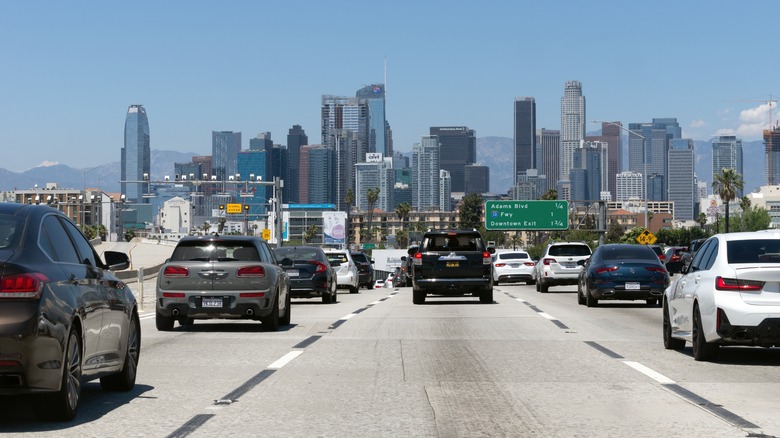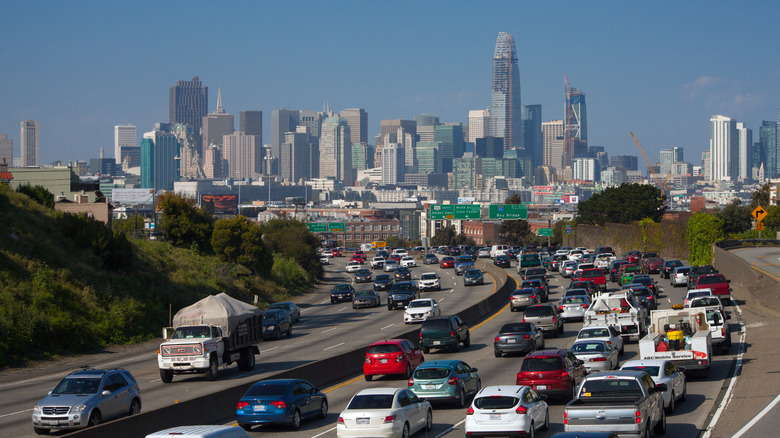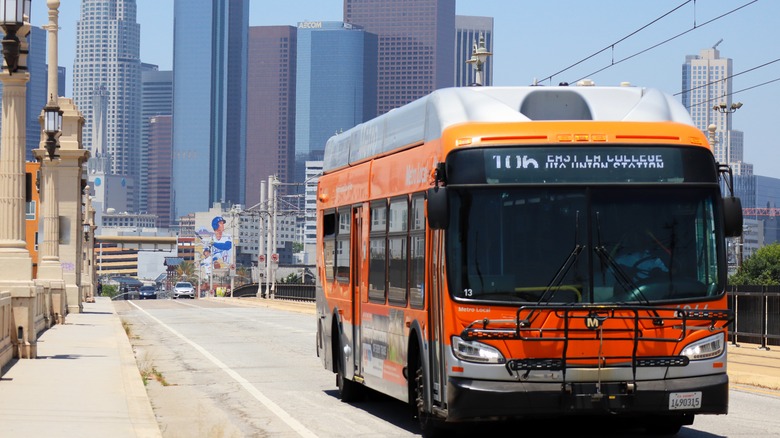Why Is Traffic In LA And San Francisco So Bad?
You've probably heard the jokes about California's massive web of highways, with commuters claiming to take the 5 to the 110 to the 104 to the 1. However, despite having so much road, California's biggest cities — namely Los Angeles and San Francisco — are known for having some of the worst traffic in the United States. This is due to a massive population and a lack of public transportation options, amongst other factors.
A few years ago, a study performed by INRIX found that the average Los Angeles driver lost 62 hours per year sitting in traffic in 2021 while San Francisco residents lost 64 hours. While it may sound like a modern day problem as you think of people applying mascara or reading a book while in a self-driving car on the packed freeway — although we certainly don't recommend doing this – but city planners warned of congestion as early as the 1920s. Even back then, early proponents of mass transit systems worried that all of these freeways would actually encourage even more traffic, and this has proven to be the case.
Los Angeles and San Francisco are crowded
The first reason for excessive traffic is an obvious one — these cities have a big population in a condensed area. San Francisco had 874,000 residents and Los Angeles had 3.8 million as of 2023 — that's 8,300 people per square mile in LA and 18,630 people per square mile in San Francisco. That's not just a lot of people — it's also a lot of cars. There are currently well over 7.9 million vehicles registered in Los Angeles and San Francisco currently has about 394,000 cars on the road, according to the California DMV. To compare, there are 2.7 million vehicles registered in the entirety of Connecticut.
This is because these big cities have infrastructures geared towards cars. Despite warnings of increased traffic in the 1920s, the cities kept building more highways, bridges, and roads — even if it meant wiping out communities to fit them in. Bridges in the Bay Area have specifically been a source of frustration despite adding new ways to drive in and out of the city. The SF County Transportation Authority shared that the speeds on the Bay Bridge going into San Francisco have slowed down quite heavily, and have even become slower than it was pre-pandemic.
Since adding even more road and highway space will simply encourage more people to drive, the congestion issue has been pretty tricky to solve.
Los Angeles and San Francisco residents don't take public transportation
With so many cars backed up on highways and bridges, you may be wondering why city residents are not just biking to work or taking public transportation. This ties into the city planning as well — Los Angeles and San Francisco are made for driving.
Up in San Francisco, the BART subway system shows 30% fewer riders than there were before 2020 and the satisfaction rate of riders has gone significantly down as well. Of course, the reduction could be due to more remote workers, but the SF Chronicle reports that crime has been an issue as well. Commute.org Executive Director John Ford is worried how this will impact traffic. Ford told The San Francisco Standard, "When public transport is no longer frequent and easy accessible, people will revert to nonshared rides because they still need to get where they need to go. Commuters often fall back into driving their own car, and that's not what our air quality needs."
Los Angeles' Metro has also been heavily scrutinized — not just for crime but a lack of stops. There have been long delays in the expansion of the Metro, leaving many areas nearly impossible to get to with public transportation. A lack of safe bike paths is another big issue. People without a car often feel better off getting a taxi or Lyft (even an autonomous Waymo) — which only adds to the traffic on the freeways and roads once more.


